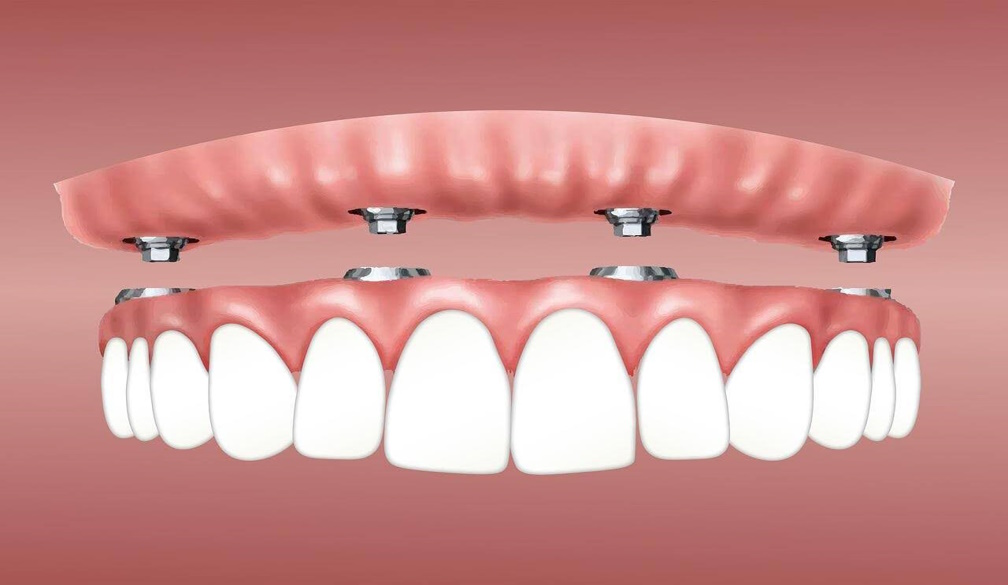What Makes All-on-4 Implants Different from Traditional Dental Implants?
- Written by Eleena Wills

It is reported that dental implants have improved the specialty of restorative dentistry with functional and esthetic replacement of lost teeth. Considering the range of possibilities, the All-on-4 implant technique is the most promising method of fully restoring a jaw. However, knowing what differentiates All-on-4 implants from their traditional counterparts is important. Let us explain the differences to ensure the solution is chosen to improve your smile.
Traditionally Used Dental Implants
Conventional dental implants are single titanium screws inserted into the mandible or maxilla to support individual teeth. An implant bears a crown and several implants may be used if some teeth are missing, to hold bridges or dentures. Despite a very high success rate and applicability in a wide range of prosthodontic surgeries and treatments, resolvable traditional implants demand sufficient oral bone mass.
In such cases, patients may require other treatments such as bone grafting and these procedures can take longer time compared to those that do not require such a procedure.
What Are All-on-4 Implants
All-on-4 implants are a special method of full reconstruction treatment invented for individuals, who have lost a big amount of their teeth up to the full set. This procedure differs from other dental implant procedures in that patients get only four implants per jaw to support a full arch of prosthetic teeth. Following are the advantages of this approach over conventional practices appreciable for patients with a large number of missing teeth or resorbed alveolar ridges.
The main difference between All-on-4 and Traditional Implants
- Number of Implants Required
Conventional dental implants may require 6 or more implants in the top and bottom jaws for a full upper or lower set of teeth replacement, but All-on-4 just needs four implants in the upper or lower set of teeth. They argue that this keeps the surgery shorter and less complicated.
- Jawbone Requirements
All-on-4 implants are placed with an anticipated angle to foster high support on the strongest zones of the jawbone making them appropriate for use in boneless patients. Unlike conventional implants, most of them may necessitate a bone graft when the jawbone density is low.
- Surgical and Recovery Time
Maxillary or mandibular rehabilitation with All-on-4 procedures takes place on average, one day for the surgical phase combined with the insertion of the provisional restoration. These implants, however, entail multiple surgeries within several months before the final restoration prosthesis is placed.
- Cost Efficiency
Because fewer implants are placed and treatment time is shorter, All-on-4 implants are more economical for full arch reconstruction than other methods.
Benefits of All on Four Implants
Immediate Results:
All-on-4 implant treatment enables patients to get a functional set of temporary dentitions on the same day of the surgery.
Minimally Invasive:
Less implant use means less surgery and of course, less time to recuperate as compared to those who underwent implant surgeries.
Enhanced Aesthetics:
The fixed prosthesis gives the confidence of a natural dental formula and thus a confident smile.
Long-Term Durability:
If taken care of properly, All-on-4 implants can last for as many decades as needed effectively. A patient who can Benefit from All Four Implants
All-on-4 implants are ideal for patients who:
- Are edentulous, in that they have lost most or all of their teeth.
- Have low jawbone density for conventional implants yet do not want to go through with bone grafting.
- Looking for another option that can be much faster and cheaper as a full mouth rehabilitation.
Such a Sydney dental specialist can provide proper advice, and all four treatments can be suggested after analysing the situation.
Traditional Implants: When Are They Preferred?
While All-on-4 implants are a game-changer for many patients, traditional dental implants are still the preferred choice in certain cases, such as:
- Replacing individual teeth.
- Being suitable for use where the prosthesis may need to be smaller, such as a small bridge or a partial denture.
- The patients who lay greater emphasis on the individual approach and who do not mind spending more time receiving treatment.
Choosing the Right Solution
Experts can help identify the person’s requirements and give personal advice. If you have any questions about the sort of specialists concerned in implant dentistry, then “A Comprehensive Guide to Dental Specialists” would be useful. This article also outlines how a periodontist, prosthodontist, and oral surgeon can help restore your smile.
Conclusion
All-on-4 implants and dental implants are among the best methods of restoring lost teeth; however, the suitability of the specific treatment depends on some conditions. All-on-4 implants are more efficient in general implant areas than complete dentures as it is less invasive and cheaper, but the traditional implants are flexible and adequate for single or multiple tooth replacement.
To the patients we have here, consulting professionals in dental implants in Sydney guarantees you approval of the best solution to fit your needs. Nevertheless, whichever of the two ways that you employ, will bring positive long-lasting changes to the health, functionality, and aesthetics of your teeth.
